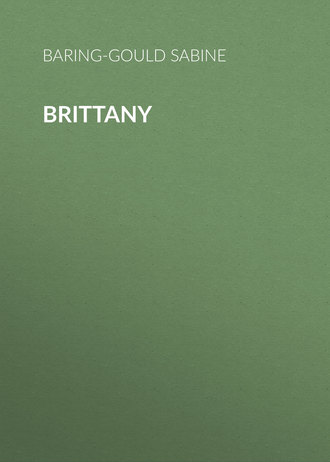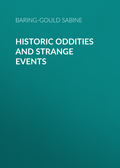
Baring-Gould Sabine
Brittany
Château des Roches was formerly the residence of Mme. de Sévigné, who lived in it repeatedly between 1654 and 1690. It consists of two blocks of buildings of the 16th cent., and is situated in a pretty park. Visitors are only admitted to the grounds, to the chapel, and to the room of Mme. de Sévigné, which contains copies of family portraits in the private apartments and some objects believed to have belonged to the marquise; among others a book of accounts for the garden signed by her. The bed and chairs are of wood painted white and covered with yellow silk damask.
Champeaux. The church is of the 14th and 19th cents., and has fine glass of the renaissance (1530-5) and tombs of the same period. About a mile and a half S.W. a menhir 12 ft. high called La Haute Pierre.
Pont l'Abbé (F.) chl. arr. Quimper. Here one is in the midst of the Bigauden country. Observe the curious and ugly way of wearing the hair and the coiffes. There are many folds of skirts fastened round the waists. The women are remarkably plain, and have staring eyes and expose their teeth. The church has fine 2nd pointed east and west windows. The tower was pulled partly down by Louis XIV. to punish the people for the Revolt of the Papier timbré. Some old houses. Fine cloister. The château of the 13th cent. has been transformed into a mairie. It retains a large tower, and buildings of the 17th cent. Outside the town to the S.W. is the château of Kernuz, transformed by the proprietor into a museum of flints, bronze and jade weapons, and gold ornaments found in the cairns and dolmens of the neighbourhood. The whole peninsula, ending in the Pointe de Penmarch (the Horse's Head), abounds in prehistoric monuments. Two dolmens are near the road, in the parish of Plomeur, which has an ugly modern church.
Penmarch was once a thriving seaport, rivalling Nantes, but for various causes declined, and is now reduced to a couple of hamlets. The church (S. Non = Ninidh, an Irish Bishop) is an interesting late flamboyant structure, the tracery in the windows affecting the forms of fleurs-de-lys. Beneath the E. window is a treasury surmounted by a gallery. At the junction of the chancel with the nave is a spirelet supported by turrets, connected with it by flying buttresses. At the S.W. a pretty little triumphal arch and gable. The church was begun in 1308. Inside the church a fireplace for heating the baptismal water. A mile and a half off is S. Guénolé, the tower of the church alone remaining, 1488. A little apse has been built out at the east end. It contains some curious statues. Here is a bathing establishment, with comfortable quarters. Kerity has some old maisons fortes, and a ruined church.
Tronoen. A chapel of the same date as that at Penmarch, with a fine Calvary. Two stages of sculptured groups.
Lambour. A flamboyant church, with colonade of the 13th cent.
Loctudy. A Romanesque church, with an Italian 18th cent. façade. It much resembles S. Gildas de Rhuys. It has been restored. Ile Tudy may be visited, but does not contain much of interest.





